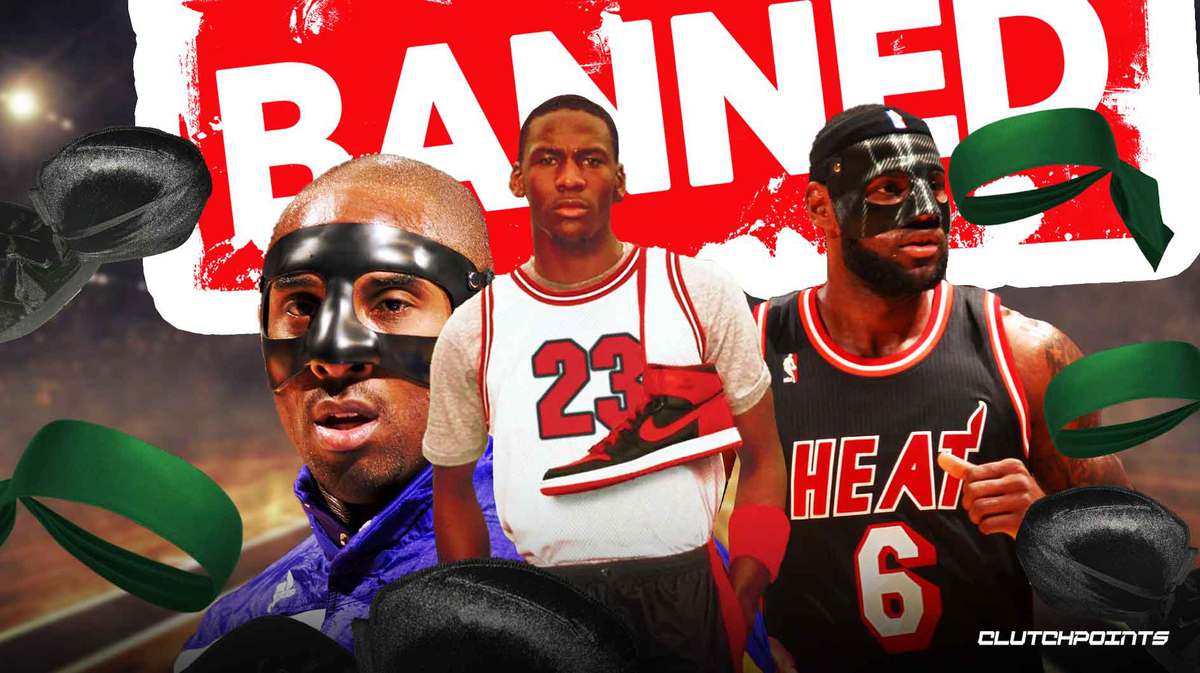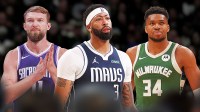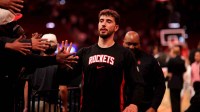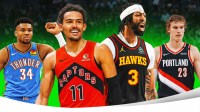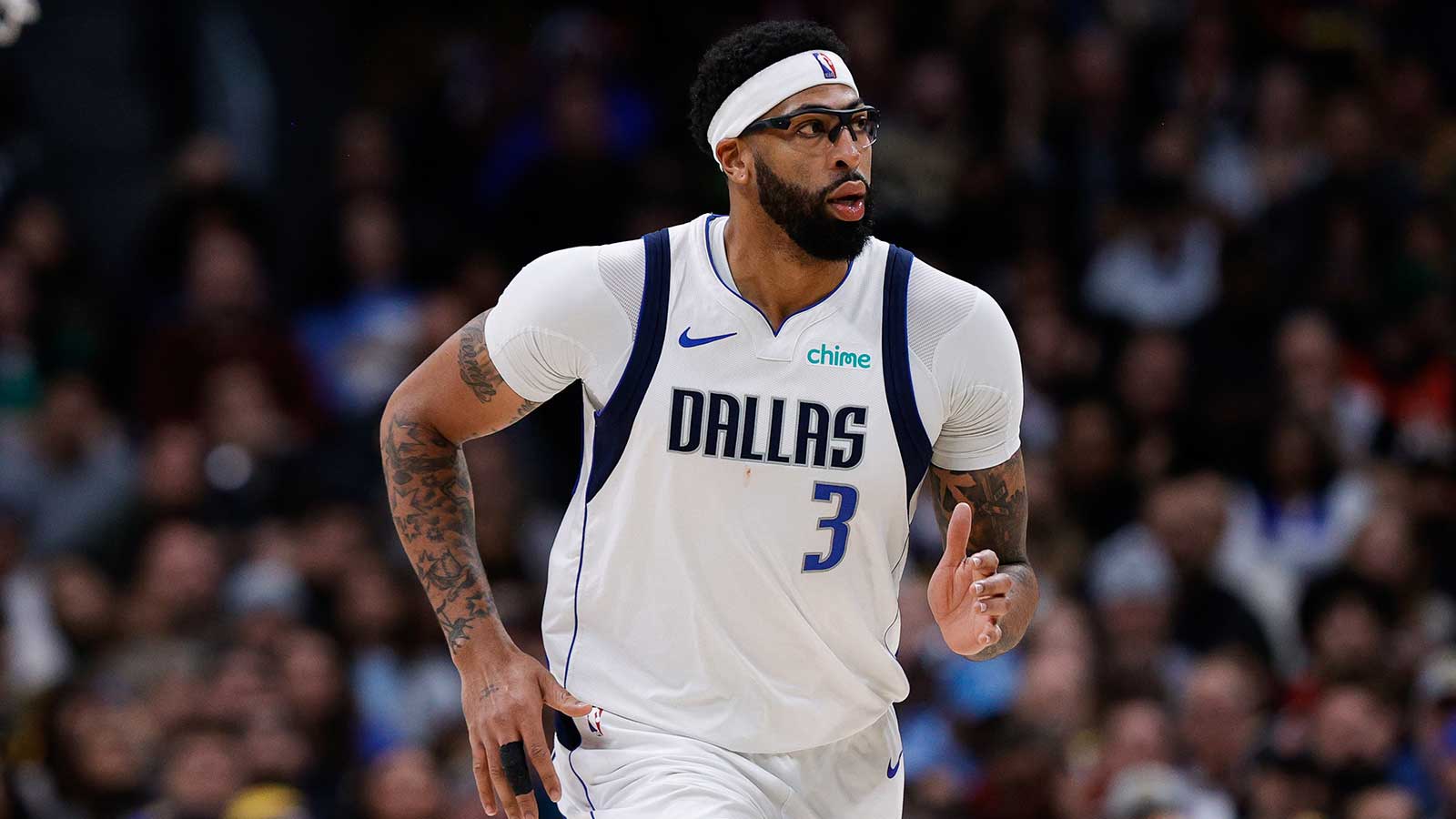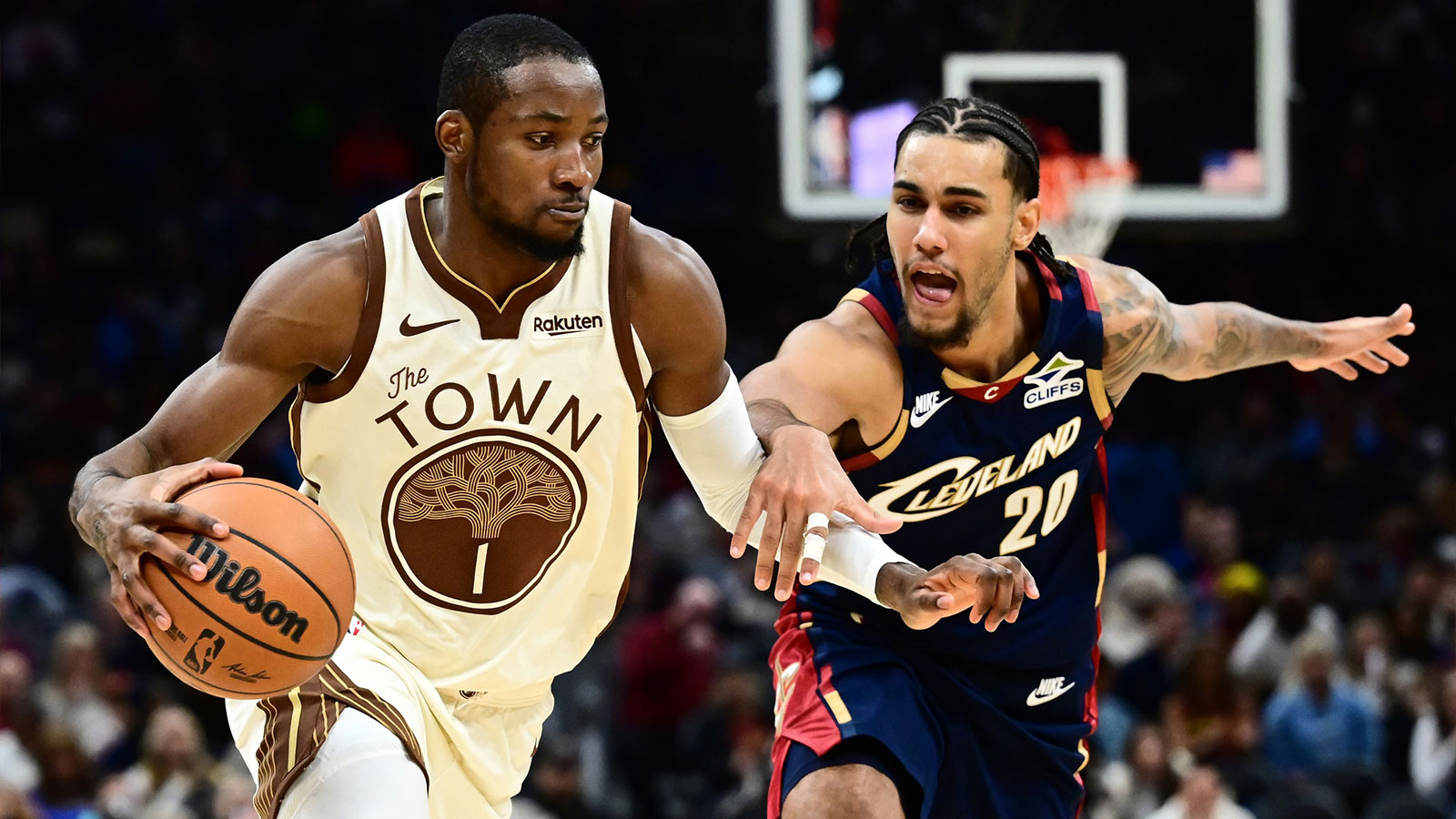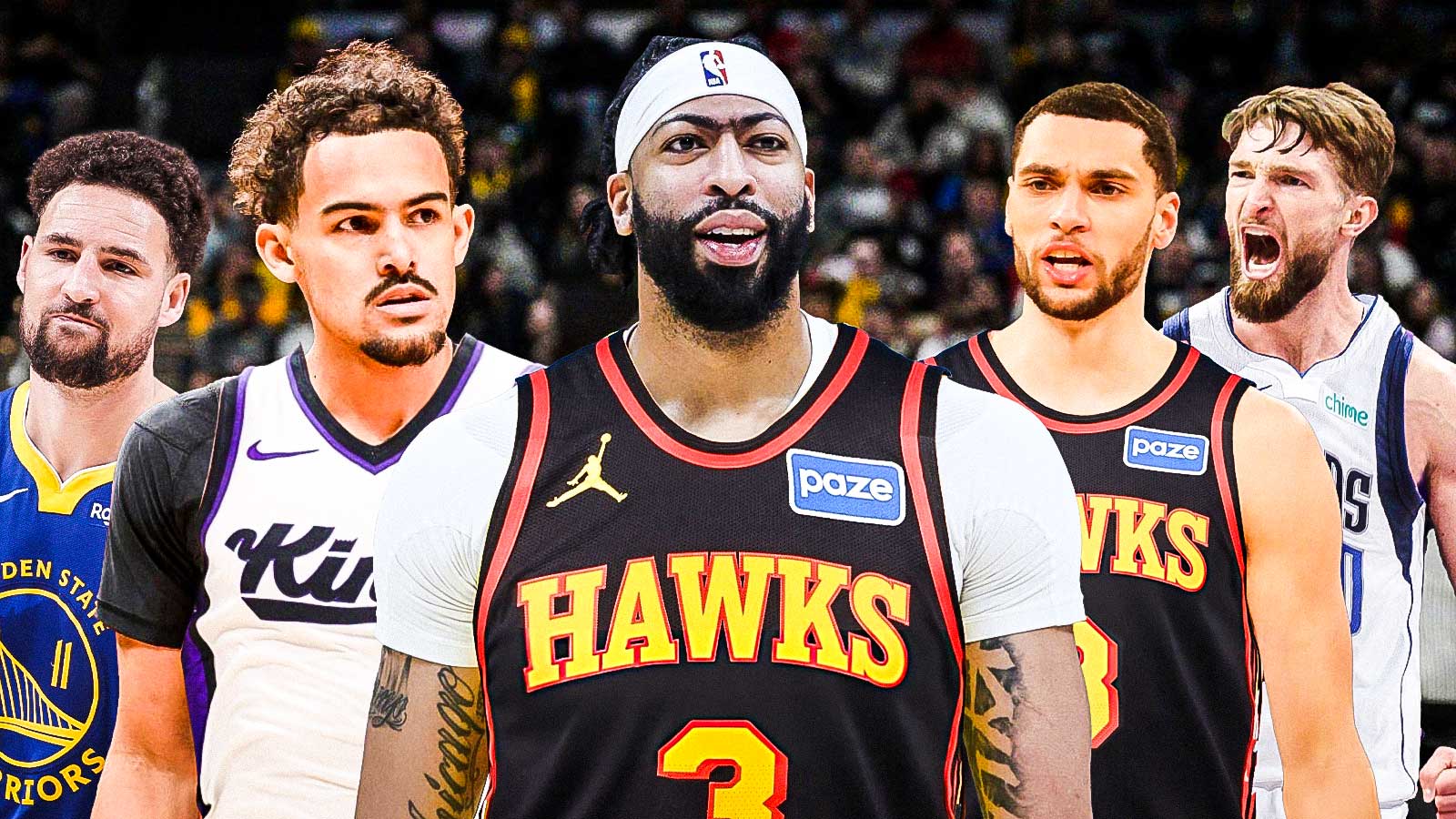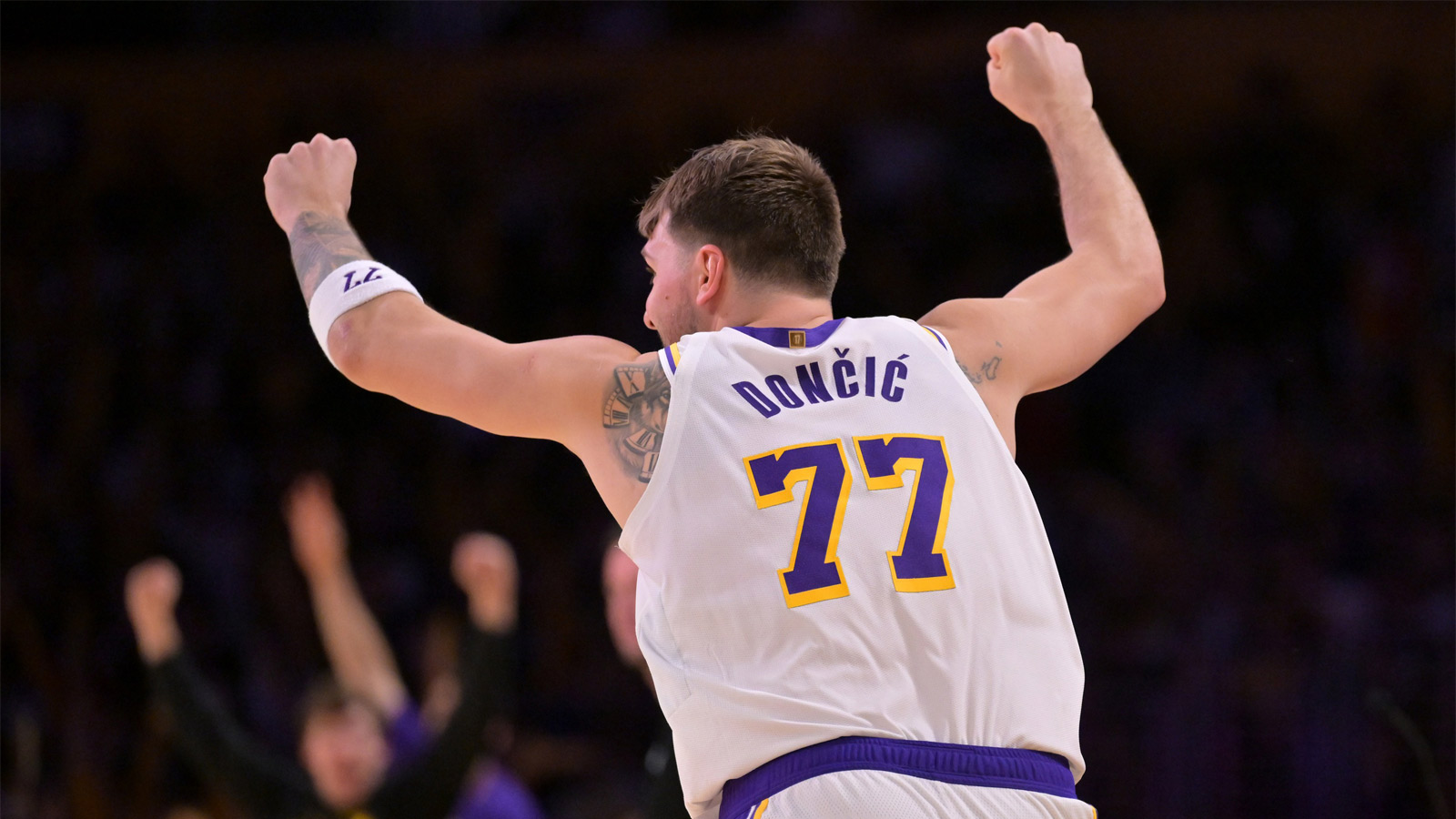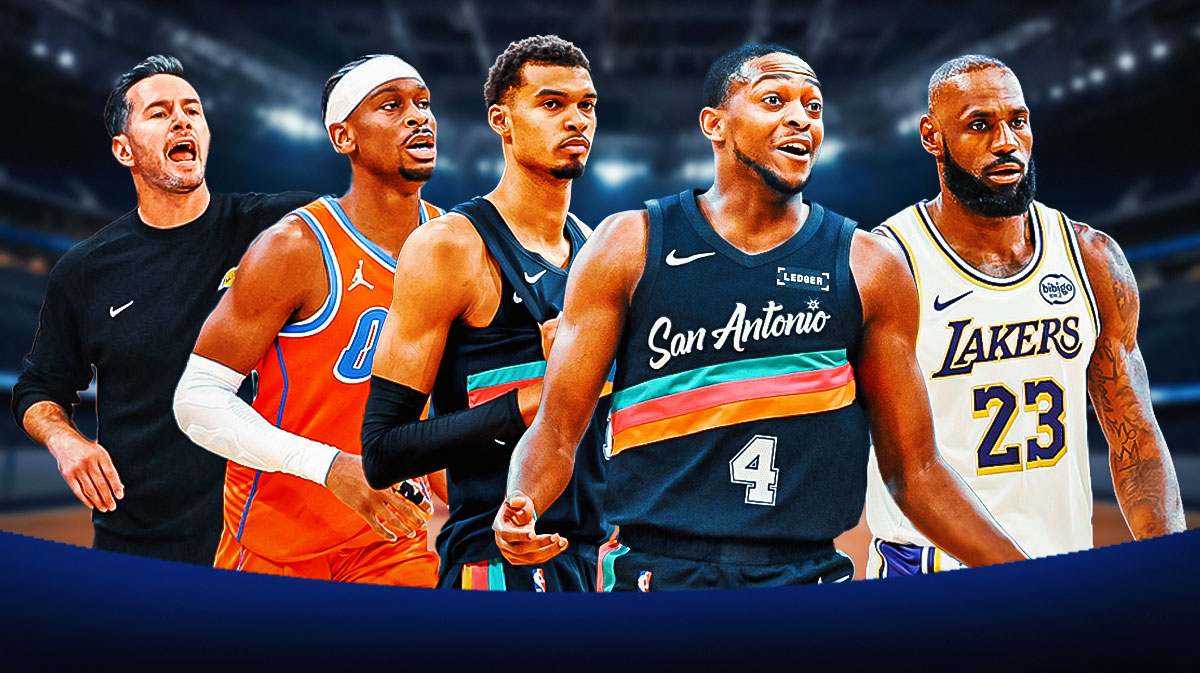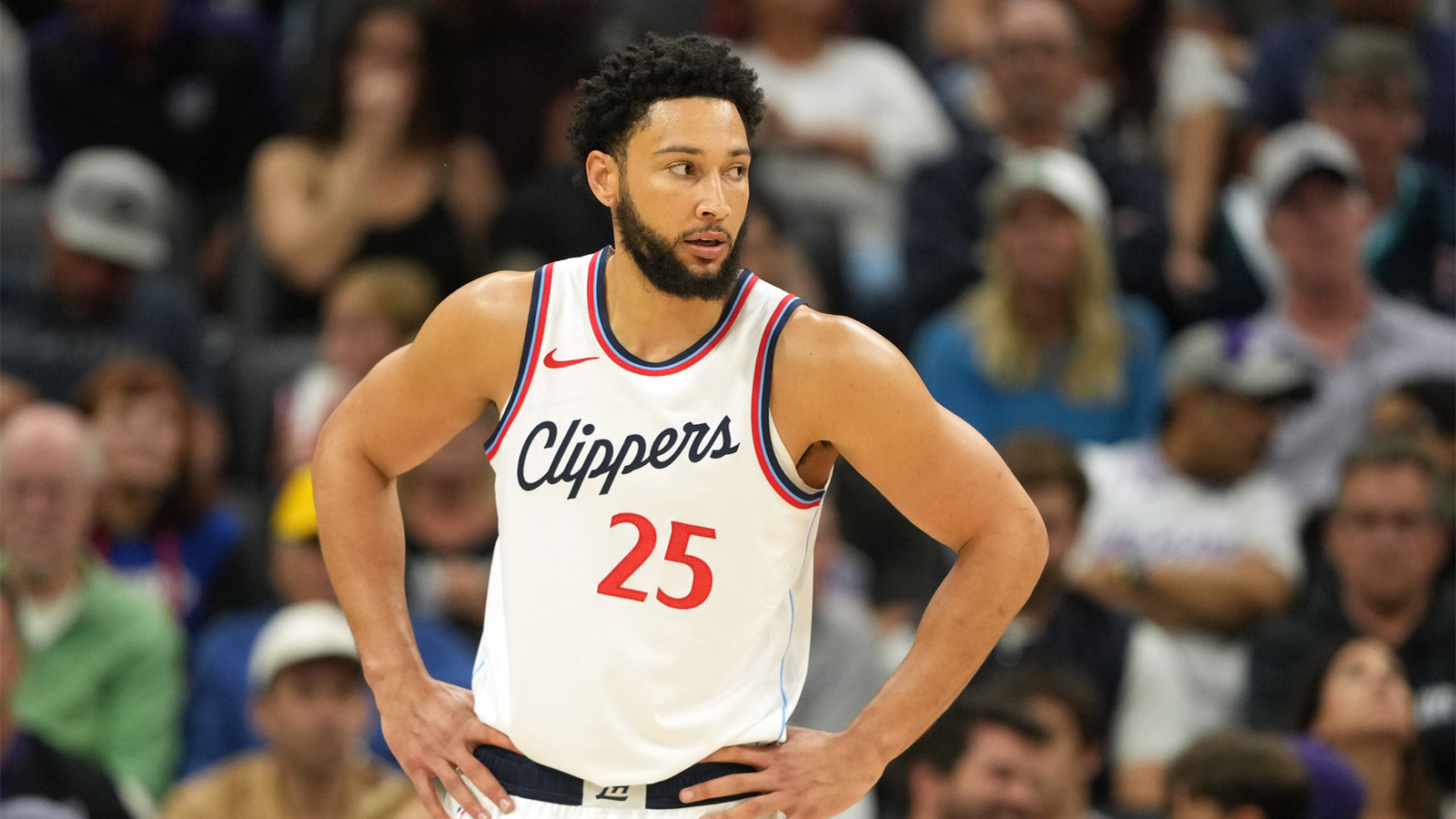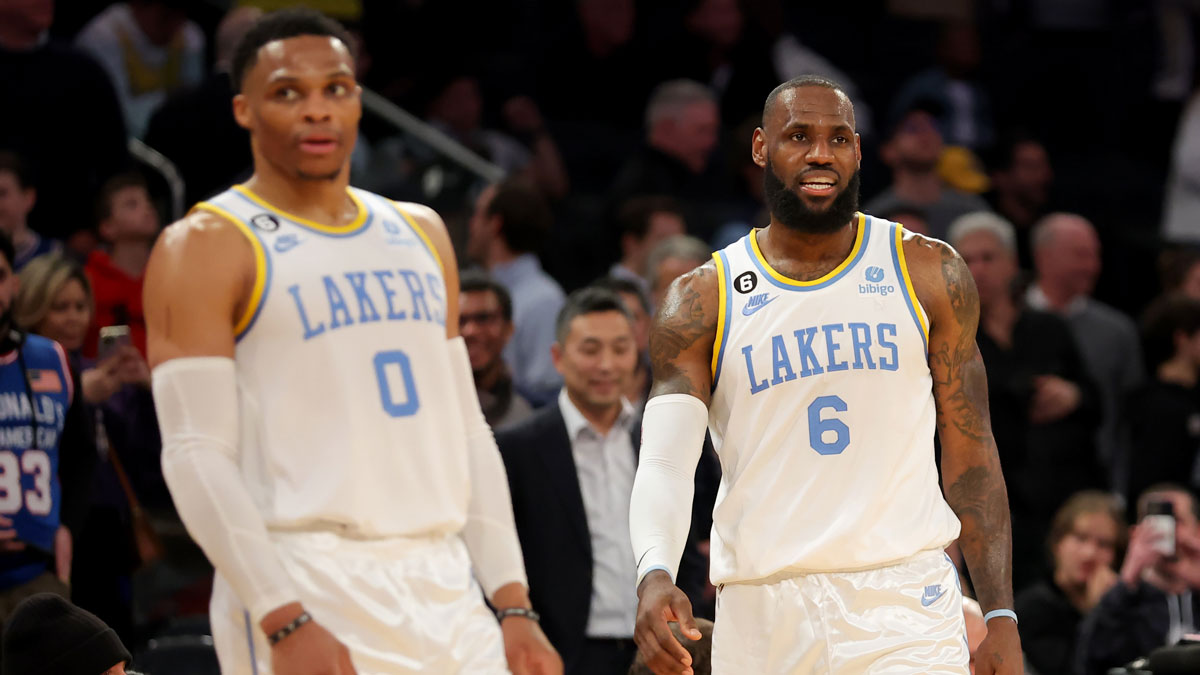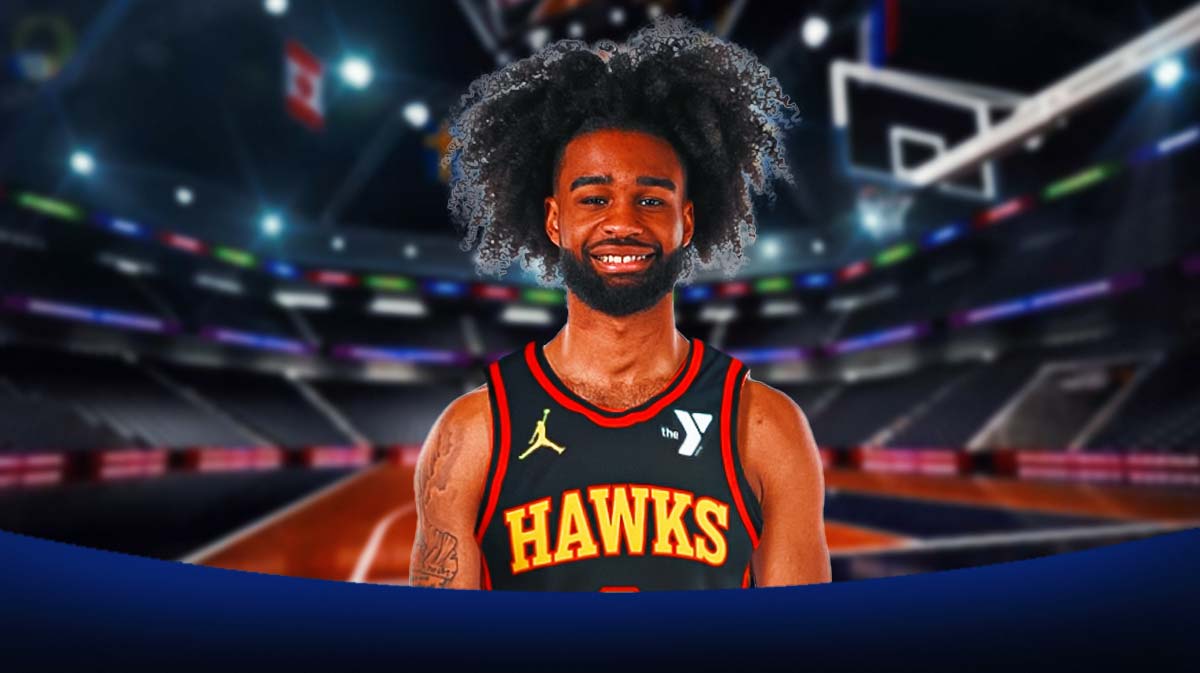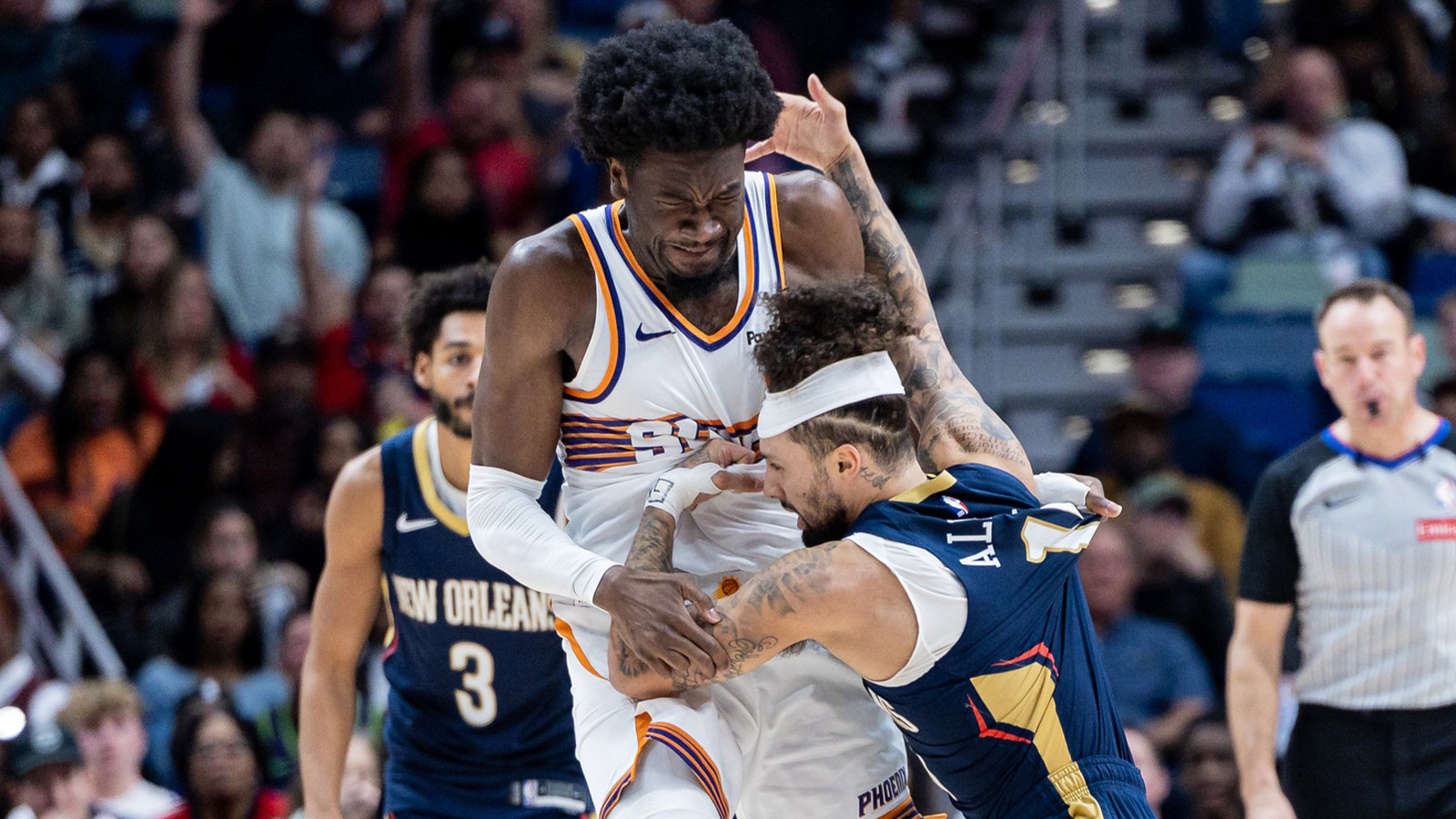The NBA has been around for a long time, 77 years to be exact. Throughout those years, the fashion trends and in-game accessories have continuously evolved among the players — some stayed, and others did not really stick, and some have been banned by the league.
From wearing gold chains during games to sporting sneakers that are said to offer a boost in the athletes’ jumping and speed, the NBA has imposed bans that they believe to be detrimental to the league. As you can see, the bans are not just for the people that they feel will give the organization a bad name. It also applies to various items that the NBA players wear to the game.
9. Dwyane Wade’s Band-Aid
Remember when Dwyane Wade used to wear his designer band-aids for fashion.. What a highlight of that era 😂😂 pic.twitter.com/uPtTc4d7Oi
— NBA Memes (@NBAMemes) September 30, 2021
The NBA banned Dwyane Wade, and everyone in the league, for wearing a Band-Aid on their face if it is not for health purposes. This trend was originally made famous by American rapper Nelly as a fashion statement.
As for The Flash, he initially had a cut over his left cheek which prompted him to wear the bandage. However, after it healed, the three-time NBA champion continued to wear it as a fashion trend wherein he used a printed version that shows the American flag, his “Flash” nickname, and even his own surname “Wade.”
Unfortunately, in 2009, the NBA decided to ban the fashionable Band-Aids to be worn if it’s not for healthcare purposes.
“A player can wear a Band-Aid for healthcare purposes, but it shouldn’t have any name or identifications on it.” said then-NBA Spokesman Tim Frank.
8. Black and red “banned” Air Jordan 1
In 1984, the NBA fined Michael Jordan $5,000 every time he wore his first signature shoe, the Air Jordan 1. This caused controversy throughout the league, but it piqued the interest of many sneakerheads during that era.
The league’s decision to fine Jordan was because the colors of the shoe, black and red, broke the NBA’s uniform rules. It even got to the point that the organization wrote a letter to Nike in February 1985 saying that the black-and-red shoes were prohibited.
Nike eventually rode the controversy to promote the Jordan brand and increase shoe sales. Today, the Jordan 1 Banned or Bred, as it is now called, is one of the most famous shoes in sneakerhead culture. It is safe to say that Michael Jordan and Nike’s persistence to wear the shoe and riding the “banned” controversy really helped the shoe and helped light the path on how the Air Jordan brand became who they are today.
7. Gold chains
Michael Jordan with the gold chains 🔥 pic.twitter.com/2Yy9b5FgvG
— Athlete Swag (@AthleteSwag) April 20, 2020
In the 1970s and the 80s, a number of big-name players wore gold chains during games. The likes of Wilt Chamberlain, Julius “Dr. J” Erving, Nate Thurmond, Darryle “Chocolate Thunder” Dawkins, and Michael Jordan — which he made famous during the 1985 NBA Dunk Contest.
Unfortunately, for the players who liked to wear chains and pendants during the games, the NBA eventually banned the wearing of chains on the court as it seemed to be a choking hazard for the athletes, and the league decided that it may do more harm than good.
6. Durags
Sam Perkins the only dude to rock a durag during an NBA game #duraghistorymonth pic.twitter.com/EbfoUycZre
— Jersey Chaser (@jerseychaser) November 7, 2016
A durag is a close-fitting cloth tied around the top of the head, which offers multiple benefits such as accelerating the development of long, curly hair; waves; and locks; maintaining natural oils in the hair; and stopping breakage. The durag is popular in African-American culture as many people wear it as a fashion choice.
Unfortunately, in the NBA, it made a brief appearance before the league banned it. In 2000, then-Indiana Pacers center Sam Perkins wore a durag during an NBA preseason game.
Shortly after, the league identified it as a potential safety hazard, and they banned players from wearing the accessory during the game. As for Perkins, he made history as the first and only NBA player to wear a durag during an NBA game.
5. Athletic Propulsion Lab sneakers
The Shoes were BANNED By the NBA due to the Tech inside that makes you JUMP Higher. Seriously. We cut them open to find the tech: https://t.co/YeStm6AQWA pic.twitter.com/7wi8klKGcP
— WHAT'S INSIDE? (@whatsinside) October 6, 2018
During the 2000s, the rise of colorful and flashy sneakers became the norm in the league. Brands such as AND1 and Reebok released eye-catching shoes that certainly caught the eye of many fans and players alike.
Among those dazzling footwear was a sneaker that claimed to increase the vertical leap of the one wearing it. This shoe came from Athletic Propulsion Labs (APL), and they named it Concept 1. The shoes’ feature was the one in hot water, called the “Load ‘N Launch®” technology.
Unfortunately, for APL, the NBA banned the shoes prior to the 2010-11 season as it goes against the league’s rule that it gives players an “unfair competitive advantage.” Funnily enough, the ban came in during the 25th anniversary of the NBA banning Nike’s Air Jordan 1 black-and-red shoes.
4. Headband with upside-down logo
Annals of Banned NBA Accessories: The upside-down headband, 2010. pic.twitter.com/r67urFk8cp
— Uni Watch (@UniWatch) September 11, 2019
The headband has been a staple in the NBA for many years now. A lot of players wear it for numerous reasons, may it be for sweat control, injury, a sense of comfort, hiding their hairline (sorry, LeBron!), or just plain fashion.
However, two-time NBA champion Rajon Rondo started to wear the headband with the NBA logo upside down when he was with the Boston Celtics. Unfortunately, in 2010, the NBA created a new rule that prohibited players from wearing their headbands upside down.
3. Ninja headbands
The NBA should’ve never banned the ninja headbands pic.twitter.com/mFmiVZQrRR
— Mink Flow (@currypistonn) July 26, 2023
To continue with the headbands, during the 2018-2019 season, NBA players such as Jimmy Butler, Jrue Holiday, Mike Scott, Montrezl Harrell, Karl-Anthony Towns, and Jarrett Allen all wore “ninja-style headbands”. This quickly became a fashion craze throughout the basketball world as it offers a way to help hold your hair up and look stylish doing it.
Unfortunately, the NBA swiftly banned it for the 2019-2020 season and beyond, citing safety issues and saying that the headwear is not part of the NBA uniform, and it did not go through the league approval process. Many players and fans alike appealed to the league’s decision, but it ultimately went to waste as nobody from the NBA ever wore it again during a game.
2. Black carbon-fiber masks
LeBron James has gone with the black mask for tonight's game against the Knicks. pic.twitter.com/75OG3mO5mW
— NBA on ESPN (@ESPNNBA) February 28, 2014
Many players wear masks over their faces after suffering a facial injury in order to be able to play again while protecting their faces and risk re-aggravating the injury. Rip Hamilton popularized using this accessory as he started to wear it after an injury.
However, players such as LeBron James, Kobe Bryant, and Kyrie Irving wore a black version of the mask — a la Batman — and the league did not like it. Soon after, the NBA asked the players to switch to a more traditional clear mask once available, and the players obliged.
1. Brand logos anywhere other than shoes
Lonzo Ball's Big Baller Brand tattoo is gone.
📸: @RockRollG pic.twitter.com/NdmQJcHMd8
— The Sporting News (@sportingnews) March 27, 2019
In 2013, then-New York Knicks guard Iman Shumpert sported his usual box-style haircut with a twist, it included the logo of the sports apparel brand adidas. This got him in trouble with the league, and he immediately ditched the logo haircut.
In 2017, the likes of J.R. Smith and Kelly Oubre wore compression sleeves bearing the logo of the clothing and skateboarding lifestyle brand Supreme. Additionally, Smith also tatted the brand logo to his right leg. Speaking of tattoos, the NBA asked point guard Lonzo Ball to cover up the tattoo of their family brand “Big Baller Brand.” According to the NBA, the only article that can bear a commercial logo that is worn by the players is their shoes.
Nevertheless, did the number of banned items in the NBA surprise you?

